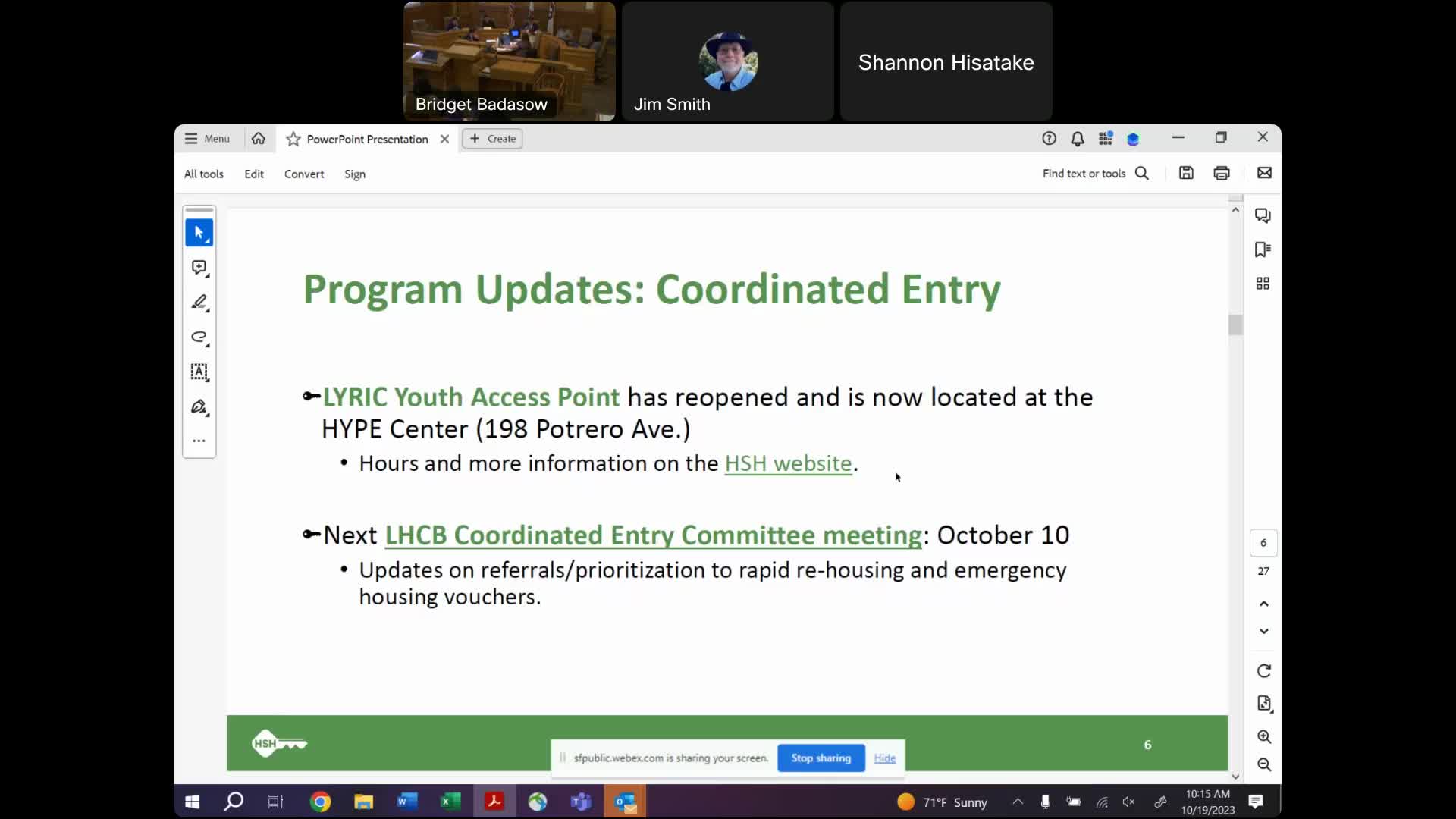San Francisco Housing Authority reports successes in emergency housing voucher program
October 19, 2023 | San Francisco City, San Francisco County, California
This article was created by AI summarizing key points discussed. AI makes mistakes, so for full details and context, please refer to the video of the full meeting. Please report any errors so we can fix them. Report an error »

The recent meeting of the San Francisco Homelessness Coordinating Board highlighted significant progress in addressing homelessness in the city. Key discussions focused on the implementation of strategic recommendations aimed at improving the coordinated entry system, which is a crucial part of the city's overall plan to combat homelessness.
One notable update is the reopening of the Lyric Youth Access Point at the Elevate or Hype Center, which aims to assist young people experiencing homelessness. The next meeting of the Coordinated Entry Committee is scheduled for October 10, where updates on rapid rehousing and emergency housing vouchers will be shared.
In August, 71 households successfully resolved their homelessness situations, marking a consistent trend since the beginning of the year and a notable increase from the previous fiscal year. The primary form of assistance provided was moving assistance. The Street to Home program, which places individuals directly into housing from the streets, is now fully operational following a successful pilot phase. As of October 1, the program has facilitated 18 placements, with 17 individuals maintaining stable housing.
San Francisco's emergency housing voucher program is also performing well, with the city surpassing national averages. The median time from voucher issuance to lease-up is 57 days in San Francisco, compared to the national average of 96 days. Additionally, 77% of households in San Francisco secured a lease within 180 days of receiving a voucher, significantly higher than the national average of 64%.
The meeting also addressed the ongoing efforts to reduce eviction rates. Data shows a decline in unlawful detainers and written notices of eviction over the past five years, with a notable drop during the COVID-19 pandemic. The majority of evictions are attributed to lease violations, with less than 10% resulting from non-payment of rent.
Overall, the meeting underscored the city's commitment to improving housing stability and reducing homelessness through proactive measures and community engagement. The next steps will involve continued focus on housing placements and landlord incentives to further enhance the effectiveness of these programs.
One notable update is the reopening of the Lyric Youth Access Point at the Elevate or Hype Center, which aims to assist young people experiencing homelessness. The next meeting of the Coordinated Entry Committee is scheduled for October 10, where updates on rapid rehousing and emergency housing vouchers will be shared.
In August, 71 households successfully resolved their homelessness situations, marking a consistent trend since the beginning of the year and a notable increase from the previous fiscal year. The primary form of assistance provided was moving assistance. The Street to Home program, which places individuals directly into housing from the streets, is now fully operational following a successful pilot phase. As of October 1, the program has facilitated 18 placements, with 17 individuals maintaining stable housing.
San Francisco's emergency housing voucher program is also performing well, with the city surpassing national averages. The median time from voucher issuance to lease-up is 57 days in San Francisco, compared to the national average of 96 days. Additionally, 77% of households in San Francisco secured a lease within 180 days of receiving a voucher, significantly higher than the national average of 64%.
The meeting also addressed the ongoing efforts to reduce eviction rates. Data shows a decline in unlawful detainers and written notices of eviction over the past five years, with a notable drop during the COVID-19 pandemic. The majority of evictions are attributed to lease violations, with less than 10% resulting from non-payment of rent.
Overall, the meeting underscored the city's commitment to improving housing stability and reducing homelessness through proactive measures and community engagement. The next steps will involve continued focus on housing placements and landlord incentives to further enhance the effectiveness of these programs.
Don't Miss a Word: See the Full Meeting!
Go beyond summaries. Unlock every video, transcript, and key insight with a Founder Membership.
✓
Get instant access to full meeting videos
✓
Search and clip any phrase from complete transcripts
✓
Receive AI-powered summaries & custom alerts
✓
Enjoy lifetime, unrestricted access to government data
30-day money-back guarantee

